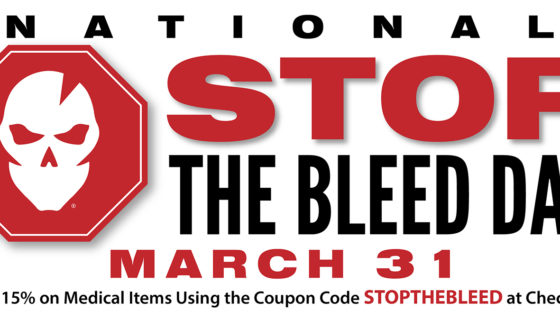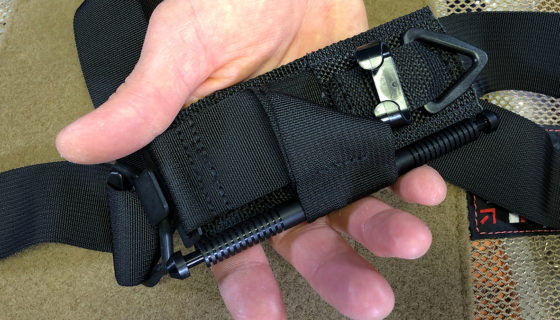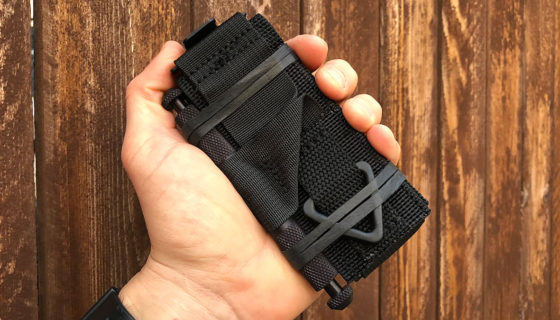Tactical Medical Training with Lone Star Medics Medicine X Course
Tactical Medical Training with Lone Star Medics Medicine X Course
This past weekend I had awesome experience of attending the ITS Tactical hosted Lone Star Medics Medicine X Course, which as the name implies, means to get yourself and any injury out of harms way and off the “X”.
Remaining static on a line at your local range can build bad training scars in my humble opinion. Training like Lone Star Medics provides not only gets you moving, shooting, communicating and thinking, but also throws in a surprise element not found in many tactical training scenarios; unforeseen care under fire.
TCCC
Based largely on TCCC (Tactical Combat Casualty Care), Medicine X is solely focused on the first phase of treatment, Care Under Fire. This can be summed up in the short list below taken from the 2010 TCCC guidelines, but it’s so much more complex than it sounds when negotiating the stress of unknown scenarios and having to return fire.
- Return fire and take cover.
- Direct or expect casualty to remain engaged as a combatant if appropriate.
- Direct casualty to move to cover and apply self-aid if able.
- Try to keep the casualty from sustaining additional wounds.
- Casualties should be extricated from burning vehicles or buildings and moved to places of relative safety. Do what is necessary to stop the burning process.
- Airway management is generally best deferred until the Tactical Field Care phase.
- Stop life-threatening external hemorrhage if tactically feasible:
– Direct casualty to control hemorrhage by self-aid if able.
– Use a CoTCCC-recommended tourniquet for hemorrhage that is anatomically amenable to tourniquet application.
– Apply the tourniquet proximal to the bleeding site, over the uniform, tighten, and move the casualty to cover.
I’d urge everyone to familiarize yourself with TCCC if you haven’t yet. This military methodology for dealing with the treatment of life threatening injuries is becoming more widely adopted every day. Not just military wide, but Police Departments are starting to take these guidelines on board as well as evidenced by the recent Tuscon Tragedy. TCCC is also constantly evolving as tactical medicine should.
Self Aid = Self Sufficiency
[flickr id=”5704946862″ thumbnail=”small” overlay=”false” size=”medium” group=”” align=”right”] Where I feel that TCCC is largely needed right now is with Police Departments. Something that has always struck a chord with me is how more often than not, departments are requiring their officers to rely solely on EMS to get treatment during a life threatening emergency, just as most civilians do. I’ve always know not to count on EMS to save my life and that of my loved ones in certain situations, especially during a national disaster or state of emergency when local resources will be otherwise occupied and stretched to capacity.
Let’s face it, that’s why ITS Tactical is here too, to provide a resource for learning skill-set information and practical applications that could one day save your life! It’s all about self-sufficiency. As Caleb Causey, the founder of Lone Star Medics, quoted in our Medicine X class, 9-12 minutes is the national average for EMS response time and you need 4 out of the 6 liters of your blood in your body to get to the OR not just the ER!
How long do you think it takes for a 2 Liter bottle full of blood to leave your body? Of course that depends on the injury, but suffice to say it will happen in a lot less than 9 minutes in any situation that deals with the first out of the three leading causes of death in the field; extremity hemorrhage, tension pneumothorax and airway obstruction! Considering that extremity hemorrhage is the number one killer, how do you keep that precious blood in your body?
Priority #1
[flickr id=”5704947276″ thumbnail=”small” overlay=”false” size=”medium” group=”” align=”right”] Engage the threat. Going off of Care Under Fire, the first priority taught by Lone Star Medics is to return fire. This means not running right up to your injured buddy until the scene is safe and the threat is neutralized. Casualties are expensive! For every casualty it takes an average of 1 1/2 guys to take their guns out of the fight and render aid. If the most effective medicine in combat is superior firepower, how effective is it if you’re having to pull guns off the fight to render aid?
When dealing with casualties during a firefight first find out if they’re responsive by verbally calling out to them. If they are responsive and can hear you, direct them to continue to engage the threat, move to cover and render self-aid. If they’re unresponsive, you don’t just run out into the fight to pull them out. Remember how expensive casualties are? You don’t want to be the next one! Use your situational awareness and best judgement on when the right time is to get them. You don’t want to put yourself on the X any longer than you have to be.
Priority #2
[flickr id=”5704946976″ thumbnail=”small” overlay=”false” size=”medium” group=”” align=”right”] Get the casualty off the “X” using drags or carries. The next critical step in Care Under Fire is to get your casualty somewhere where they can be further evaluated to address any life-threatening bleeding with a tourniquet if they haven’t already themselves using self-aid. As the TCCC guidelines mention, this is IF it’s tactically feasible. If the bullets are flying and you’re negotiating threats you definitely don’t have the time to try and treat a casualty. This may seem simple, but as I experienced first hand in our scenarios, it can be challenging to do the right thing under the stress of rounds flying.
The first thing we were taught is to approach the casualty from their feet if possible, so as to be visually recognized as a non-threat. We went over a slew of different drags and carries and the positives and negatives of each. We even got into using different commercially available products to aid in dragging and carrying, but remember, time is of the essence and attaching devices to your casualty is only going to cost you more time! You can argue this fact if you’d like, but I’d urge you to practice and find out what works for you. For me, even the thought of using these devices adds one more step to the equation, more time and one more piece of equipment that can fail.
[flickr id=”5704946858″ thumbnail=”small” overlay=”false” size=”medium” group=”” align=”right”] That Hollywood method of hooking someone up to your Rigger’s Belt and dragging them as you move backwards while firing, is crap. Not only is it hard to even negotiate threats moving backwards like that, but guess where your barrel is pointed when you trip and fall? Yep, at your casualty. The Lone Star Medics mission statement is “To cause no further injury to my patient…” This method doesn’t really fall in line with that.
What I found worked the best when working alone on an unconscious casualty was a technique taught in class. It’s to sling your rifle, sit the casualty up, squat while facing the casualty’s back with your toes near their tailbone, lock your arms under their armpits and stand up. You then move backwards to safety. As a team of at least two, the best method for us was for one man to move the casualty using the aforementioned method while the other provided cover fire. If we weren’t taking fire it was for both to hook an arm under an armpit and pull, or to grab a shoulder strap from their rig and pull them.
Working with “Rescue Randy,” our 180+ lb. dummy wearing a flack jacket and LBE was challenging to say the least. I did however like how realistic his weight was, as it brought even more realism to the course. One last thing to mention here is that in any drag/carry method employed, the goal is to get your casualty up as high as possible. Think about that for a second and what muscle group you’re using when you’re bent over dragging something vs. standing up dragging something. There are some that think you need to keep a low profile, but as Caleb noted, you need to keep a FAST profile when you’re moving off the X! Use the larger muscle group to get the casualty to safety, i.e. your legs, not your back.
Priority # 3
[flickr id=”5704380257″ thumbnail=”small” overlay=”false” size=”medium” group=”” align=”right”] Buy back seconds. We’ve all heard of the ABC’s, right? Airway, Breathing, Circulation. The first thing that Medicine X teaches is to put circulation first on your patient in a tactical environment, above airway and breathing. This is done through the use of a Tourniquet first and foremost if extremity hemorrhage is a factor. In a normal setting you’d start with a pressure dressing like an Israeli Bandage, but when time is of the essence you don’t have time to wait and see if a pressure dressing is going to be enough. The TCCC recommends a tourniquet is applied first and foremost in situations that would cause you to question a pressure dressing over a tourniquet.
Currently the TCCC recommends either the TacMed Solutions SOFTT or NARP CAT. There’s been a long debate over the merits of each and with the introduction of the SOFTT-W (wide) and removal of the set screw, I feel the SOFTT-W is superior in many ways. While I’ll leave this comparison for a future article, I will say that there’s positives and negatives of each, but I found the SOFTT-W to be faster and more user friendly when seconds count.
When placing a Tourniquet the important things to note are to put it up as high as possible on the extremity, never place it on a joint, keep the windlass inboard or towards the body and turn it until ALL BLEEDING STOPS. Not just the bright red blood! Also make sure nothing is in a pocket that lies underneath where you may be placing a tourniquet.
As far as removing a tourniquet, that’s hopefully something you won’t have to deal with as the person making that decision will be higher echelon care. Anything over 6 hours is going to require amputation and loosening a tourniquet can be dangerous as you have the potential to recirculate blood clots.
For bleeding that doesn’t warrant a tourniquet, or even as a backup to a tourniquet, a pressure dressing can be applied if time permits. None of the compact pressure dressings easily carried in a Blow Out Kit or IFAK are perfect, but the one I had the best success with in a training environment is the Israeli Dressing, this is also the dressing of choice in our ETA Kit designed by an 18D Corpsman. Again, I’ll save the comparison for a future article.
Practical Exercises and Scenarios
[flickr id=”5704946078″ thumbnail=”small” overlay=”false” size=”medium” group=”” align=”right”] What’s truly remarkable about the experience at Lone Star Medics is how we not only went into classroom discussion with all the Care Under Fire procedures (without death by powerpoint), but actually had to put them into play while shooting, moving and communicating to locate a casualty. Rescue Randy was our objective in all our exercises which ranged from hanging out in a local Wal-Mart with a concealed carry, when your buddy Randy takes fire and becomes a casualty, to a bad day in Baghdad working as a team to move a casualty to safety and properly treating them.
Adding live-fire into any training scenario just makes sense, especially doing so out of the confines of a static range. Yes, safety is always the number one concern and as you’ll see on the video below, there were times the action stopped when the RSOs Caleb and Andrew saw any potential of a questionable situation. Safety is always paramount, but I’m a big believer in training like you fight. Moving dynamically on a range with others is something I’d highly recommend everyone works into their training regimen. When you throw in the extra stressors of having to communicate with a casualty, dynamically assessing them and moving them to safety, it’s a whole different ballgame!
[flickr id=”5704946026″ thumbnail=”small” overlay=”false” size=”medium” group=”” align=”right”] Our FTX consisted of locating our injured teammate Rescue Randy on foot and humping him out with a Med Sled VLR litter to be MEDEVAC’d. We lucked out in getting to T&E the Med Sled VLR during the class and it’s 6 lb. weight was a welcome change to other heavier flexible litters I’ve seen. Throughout our transition to extract Randy, we had to engage threats, cross streams and work as a team. We got thrown curve balls along the way as members of our team received injuries that required self-aid and buddy aid.
http://youtu.be/F7qZV4Qu4hw
Wrap-up
[flickr id=”5704380485″ thumbnail=”small” overlay=”false” size=”medium” group=”” align=”right”] We also went in to many other topics outside of Care Under Fire such as the use of hemostatic agents like QuickClot Combat Gauze, treating Tension Pneumothorax, airway adjuncts like an NPA (Nasopharyngeal Airway), wound packing and treating for shock. Although these are all used outside of the Care Under Fire phase of TCCC, it was great that we covered them and got a chance to hear Caleb’s knowledge on the subjects.
Lone Star Medics put on a fantastic course of instruction with Medicine X. I truly feel that the professionalism and knowledge that Caleb, Andrew and the crew of Lone Star Medics brought to the table was delivered in a way that allowed everyone to learn on an equal footing. Our class was largely made up of prior military guys, which I feel contributed to the ease of working together as a team, but Lone Star Medics classes are open to all qualified trainees.
[flickr id=”5704379043″ thumbnail=”small” overlay=”false” size=”medium” group=”” align=”right”] The information was presented in a very practical manner of learning the skills and ingraining them with practical application scenarios. While already having some medical experience and knowledge I felt this class to be a even better than what I’d expected. I’m a strong believer in being a student for life and learning from every opportunity. These scenarios were a perfect opportunity to put my new and past knowledge into practice and find out what worked.
I wholeheartedly recommend Lone Star Medics’ Medicine X course for everyone that carries a gun and takes their life and those around them seriously. Do yourself a favor and learn what to do when EMS is 9-12 minutes away! As a final note, I want to recommend to everyone that at the very least you buy extras of the medical supplies you carry and practice with it prior to using it in a real situation. Your speed and familiarity with a product’s uses and limitations could mean the difference between life and death.
Thank You’s
Of course a huge thank you to Caleb and Lone Star Medics for allowing me the opportunity to organize and host this Medicine X class for ITS Tactical. I’d also like to thank Andrew of Lone Star Armory for his instruction, providing lunch on Saturday and helping out as RSO during the class. You should really check out some of the awesomeness that Andrew produces over at Lone Star Armory, he had a sick 300 Blackout he was shooting that made me pretty jealous. He did want my Mayflower R&C Lo-Pro Carrier I was wearing though, so maybe we make a deal! Hah!
I’d also like to thank Kyle of Fire Fight Underwater Recovery for personally cooking an outstanding lunch on Sunday, TacMed Solutions and JBC Corp for providing training equipment, XS Sight Systems and to Quail Creek Shooting Range for allowing us the use of their classroom and police range for the course. A huge thank you to all those that came out and attended the course and for taking time out of your Mother’s Day Weekend to learn skills that might save mom one day!
[flickrset id=”72157626560358161″ thumbnail=”thumbnail” photos=”” overlay=”true” size=”medium”]











Discussion